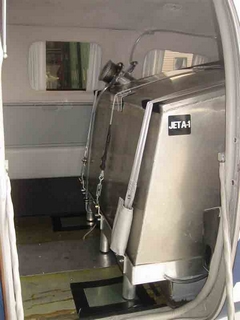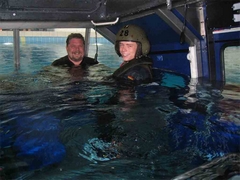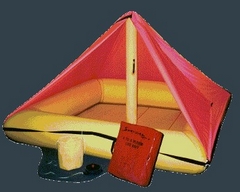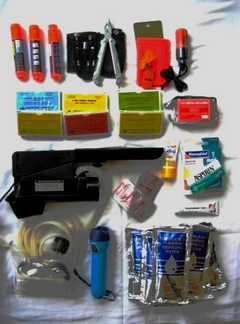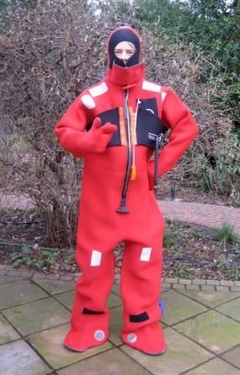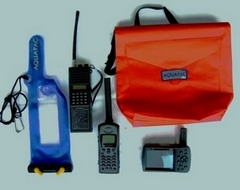|
|
Preparing
to Fly Around the World
I have been toying with the idea of flying around the world in a (small) plane for years. I have visited the earthsrounders website www.earthrounders.com many a time and studied the reports on successful journeys with envy. The final decision to go ahead and make definite plans was made at an IFFR meeting in Vienna, Austria, where I met our Rotary Friend Jürgen Timm (he rounded the earth in 1997). Such a project is not as “trivial” as flying around the world in an airliner. The fact that there have only been 121 successful circumnavigations of the earth with single-engined aircraft is sufficient evidence of that. Sure, today’s means of navigations – the be-all and end-all of flying - has become much easier with GPS. Internet and satellite telephones have also provided previously undreamt-of communication opportunities. Today the pilot can retrieve the latest online weather data – by far the most important information a pilot needs – shortly before take-off and problems, e. g. entry and transit rights can even be settled during the flight by satellite telephone. Nevertheless every flight – oft over long stretches of water – always bears certain risks, the more so as one cannot expect Search and Rescue to arrive quickly in the case of an emergency landing. In addition many countries still have an impenetrable bureaucracy regulating entry, transit, landing and exit permission, visa and vaccination regulations, customs legislation – and in some countries officials use their position to improve their salaries. Such an undertaking not only costs a lot of money, but requires a lot of time and patience. We started our preparations mid 2004. Our first and most important task was the development, approval and the installation of an additional fuel tank. The additional 250 litres provides our aircraft with a total fuel capacity of 820 litres, which extends our “theoretical range” (including the necessary reserves for alternative airfields or holdings) to approximately 1,500 nautical miles (NM). We require an extended range in order to plan routes, which will allow us to surmount distances of over 1,000 NM without having to do without sufficient reserves (if you fly, for example, from Russia to the Aleutians and the airstrip at Adak is closed due to fog and the next airstrip is 370 NM away, you will need sufficient reserves). At this point I would like to thank John Mariani, Florida (USA), who engineered the additional fuel tank thereby laying the cornerstone for FAA approval (a truly complicated undertaking). I would also like to thank Andrew Bullard, Australia, who himself installed an additional fuel tank in his JetProp in order to fly from the US to Australia. He was so kind as to lend me his engineering documents. Andreas Porthun (an aircraft construction student in Bremen, Germany) who drew the plans using Catia CAD and, last but not least, Billy Johnson of Atlas Air Service, Bremen (Germany), who oversaw the practical implementation in the N49HF. The second part of our preparations involved „survival and rescue after ditching“, essential training prior to flying across the cold waters of the North Atlantic and North Pacific (maximum survival time in cold water without a protective suit is 3 minutes). We signed up for a sea survival training course together with Trude and Reto Godly offered by the AOPA on the premises of the Germany naval base in Nordholz . In practical drills our instructors showed us the risks involved with escaping the cockpit under water, taught us how to act in emergency situations, and reveal the importance of good equipment and training. The third part of our
preparations involved the acquisition of a range of additional
equipment: a Motorola 9505 Iridium satellite telephone with a switch
for a headset – after several trials worked best with New Zealand-made
“Flightcell” (our thanks go to Florian Gotter for his help and
persistence in our search for the best solution). All other preparations are not the least bit less time consuming, but need not be described in detail. They involve detailed route planning, applications for visa, as well as entry, transit and landing permission for 10 countries (with the help of FSI, Baden), drawing up of 30 flight plans, a variety of vaccinations, booking hotels for 24 destinations, detailed equipment and baggage planning (due to the limited load capacity of the aircraft) and not to mention the preparatory contacts, e-mails and arrangements made with various Rotary Clubs on our route. If you are interested in the details behind such preparations, we highly recommend Reto Godly’s website: www.godlywings.ch. Reto Godly provides an excellent description of the essentials of such a trip. His website along with many talks and phone calls helped us a lot. Thanks Reto! |
